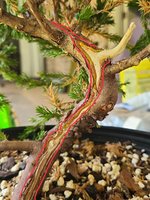Pigskin Pete
Yamadori
I purchased and gently pruned a parsons juniper in early Spring. At that time I also carved shari and applied lime sulphur.
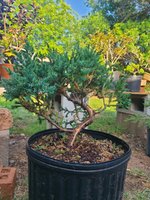
The deadwood appears to be healing over. I am seeking advice on what to do to maintain this deadwood feature on my tree. Do I simply carve back the new growth and reapply lime sulphur? If so, when is best to do that?
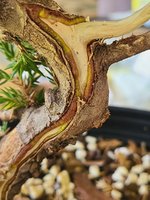
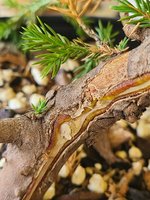
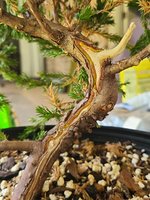

The deadwood appears to be healing over. I am seeking advice on what to do to maintain this deadwood feature on my tree. Do I simply carve back the new growth and reapply lime sulphur? If so, when is best to do that?




